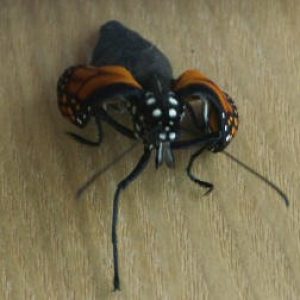In recent years, mass populations of insect pollinators such as butterflies and bees have faced near-extinction events, particularly due to loss of habitat, pesticides and global climatic change. These pollinators are extremely important in the world’s food source. Without them, people will not enjoy chocolates, apples, coffee and other foods that have become vital in our daily existence. Nearly 75 percent of the food crops worldwide depend on these pollinators, therefore, their existence and health affect the food production.
Butterflies and moths are also vital indicators of a healthy environment and ecosystems. For instance, regions with healthy populations of butterflies and moths are also rich in other invertebrates. Collectively, the stability results in widespread environmental benefits such as natural pest control and healthy pollination.
You can support your monarchs by giving them a helping hand by planting swan plants for the caterpillars to eat and bright nectar-filled flowers for the adults, to help keep the monarchs of our gardens alive.
Cold Climates
Monarchs (and all butterflies) are sensitive to air temperature. Their growth is the strongest in warm weather, and cooler temperatures signal a change in behaviour. For Monarchs and those that do not go into diapause as caterpillars, if the lows are above freezing and the day temperatures are above 18-21 C, they’ll be fine. As cold-blooded critters, if temperatures drop too low, they’ll literally freeze. If temperatures don’t climb high enough in the day, they can’t eat and will either contract disease from their weakness and die or will die from starvation.
When the air temperature drops to 12-13°C, monarchs look for overwintering sites. Most butterflies stay within the area where they eclosed (became adults). Overwintering monarchs prefer sites that are sheltered from the wind, have trees with a rough bark surface on which to cling and have a nearby source of nectar. The butterflies are mostly inactive, but on warm days, they fly, bask in the sunlight and feed. When the temperatures warm up, butterflies become active again.
Help a Monarch Butterfly that has Fallen from the Chrysalis
You don’t want to miss the birth, the process is fascinating. Sometimes – especially if it is windy – the butterfly can fall from its chrysalis but they need to hang for a minimum of 4 hours so that their wings can be pumped up by the fluid that will run through their veins as well they’re proboscis or what you might call a tongue needs to get it together as upon eclosing it is in two pieces and they will immediately stick them out and start knitting them together.
Oh no! She fell down! We must save her! She needs something to grab on! Anything… a pencil! Alright, hang on tight now, little one…



Yes! Saved by a yellow pencil!



Make Food for Struggling Monarch Butterflies
Food Source 1
- 4 parts water
- 1 part granulated sugar
Boil the solution for several minutes until sugar is dissolved, and then let cool. Serve the solution in a shallow container with an absorbent material such as paper towels saturated with the sugar solution.
Bright yellow and orange kitchen scouring pads may be placed in the solution to attract butterflies and give them a resting place while they drink.
Place the feeder among your nectar flowers on a post that’s 4-6 inches higher than the tallest blooms. Extra solution can be stored in your refrigerator for up to a week.
Food Source 2
Using a plate feeder, add fruit that is going bad. Butterflies are particularly fond of sliced, rotting oranges, grapefruits, strawberries, peaches, nectarines, apples and bananas. Place on plates and put outside. The mixture can be kept moist by adding water or fruit juice.
Food Source 3
- 450 grams sugar
- 1 or 2 cans stale beer
- 3 mashed overripe banana
- 1 cup of molasses or syrup
- 1 cup of fruit juice
Mix all ingredients well and paint on trees, fence posts, rocks, or stumps – or simply soak a sponge in the mixture and hang from a tree limb.